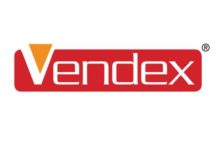 Save a Cup recently staged its fifth annual presentation to the industry, at its now regular venue of The Society of Chemical Industry, in London. While it doesn’t really seem five years since the first event – in The Crypt of St Paul’s Cathedral (surely one of the most innovative venues in the history of the vending industry) – a lot has happened to the organisation since then. This was underlined at the 2008 conference, and augmented with some tantalising additions for the future.
Save a Cup recently staged its fifth annual presentation to the industry, at its now regular venue of The Society of Chemical Industry, in London. While it doesn’t really seem five years since the first event – in The Crypt of St Paul’s Cathedral (surely one of the most innovative venues in the history of the vending industry) – a lot has happened to the organisation since then. This was underlined at the 2008 conference, and augmented with some tantalising additions for the future.
Possibly most importantly, and certainly welcome to regular attendees, was the change of format. Gone was the interesting (but seemingly never-ending) journey through company finances and performance statistics, and in came a refreshing look at what, how and where Save a Cup should be operating from now on.
The event opened with a ‘where we are now’ address by Chairman David Hoskin. A regular performer at these occasions, David launched in with what was to be the only reference to performance figures. Far from a cunning ploy to conceal a poor year, this revealed an anticipated, and highly respectable, turnover figure for 2007/8 of £1,096, 564. Better still, the sum included revenue from recently-introduced collection sack charges of £178,000; equally new administration charges totally £91,000; and initial income from embryonic site charges of £12,000. These new revenue streams all help to reduce the importance of the environmental charge (last year totalling £376,450) and are an important step towards the widely held goal of eliminating it in the future. Revenue from other sources (£720,114) is more than double that achieved in 2004.
David then moved on to reveal the direction that Save a Cup plans to take from now onwards. While it was not news to many in the audience that Save a Cup has expanded during the year into the collection of paper cups, in addition to the traditional polystyrene variety, there were a few open mouths when he revealed that the scheme has been looking even farther afield, including trials with polypropylene, sachets, pods and even cans.
It became evident that the perceived course for Save a Cup is more of a recovery company than a recycling one. Either way it will be clearly understood and communicated to the industry, consumers, trade associations and politicians.
What results when communication is absent was well described by the next speaker, Frank Doorenbosch, Sales and Marketing Director of RPC Tedeco, who spoke about unfortunate experiences in the Netherlands. In the beginning, he described, there was Retour – a collection/recycling scheme not unlike Save a Cup, but lacking a clear presence with the public and politicians. Nonetheless, its existence helped to reduce environmental pressures, until the level of (unrelated) litter in the Netherlands started to rise at an alarming rate. This resulted in something of a governmental knee-jerk reaction and the launch of initiatives aimed reducing litter. Only partially successful, they were discontinued in favour of a new law to regulate the collection, re-use and recycling of all used packaging materials.
However, discussions failed to achieve agreement on how the legislation would be operated and what the costs would be. Many months and a change of government later and there was a decision that the law should be implemented (at a cost to industry of around e115 million). Moreover, it was decided that a general packaging tax should also be introduced (at a cost to industry of e250 million). Both measures were scheduled to be in place within about a month – in January 2008.
“Needless to say”, explained Frank, “the industry does not like it, and the future is looking very stormy. The simple message for the politicians and the public is self-management of recovery and recycling is the only way.”
Logically following on from Frank, there was a presentation from Susan Nash, Trade Marketing Manager with Kraft Europe, who introduced delegates to the new Paper Cup Recovery and Recycling Group, which has been established by a number of organisations including Kraft, Huhtamaki, Stora Enso, and Bender to handle the recovery and recycling of used paper beverage cups – a highly recyclable piece of packaging.
Susan explained the thinking behind the organisation and the challenges that face it – not least being achieving volumes of used cups and establishing working relationships with the paper mills that will ultimately recycle the cups.
It is the group’s intention to share its knowledge with Save a Cup, which is likely to be collecting paper cups on its behalf. Initial trials are in progress with paper mills, using post production material, and more are planned for the future with ‘real’ used paper cups.
“It is important to move swiftly”, explained Susan, “we need to do more and quickly.”
Barry Bennett, Chairman of the AVA, then took the podium with a very clear message about the compelling global need for action on environmental issues – referring to escalating population figures estimated at nine billion by 2050, depleting natural resources, slow start to waste management and the much publicised dangers posed by global warming.
“Green issues equal votes”, he explained and it is essential that we drive the perception and positioning of what we are trying to achieve. We must be seen to be to be doing something – particularly by the politicians, including those in Europe who are responsible for a huge amount of legislation that affects us.”
The vending industry’s response, he suggested, should cover taking on board consumer concern; re-use potential of machines; recycling activities like Save a Cup and C10C; providing advice to government; and demonstrating best practice. “Overall”, he summarised, “we need to take practical, cost-effective actions and avoid the risk of posturing”.
In his following summary which rounded -off of the event, David Hoskin made the important point that with the direction now being taken, “Save a Cup is on course to achieve self-sufficiency within three years”.
A lively debate followed, partly fuelled by earlier discussion about the possible future abolition of the environmental charge. Perhaps surprisingly, the notion did not meet with universal approval, some thinking that the charge should remain and that payment of it is the ‘right and proper’ thing to do, in terms of the environment. Some members of the audience put forward the contentious idea of actually increasing the charge. Either way, it was generally agreed that it should be passed on to the consumer, at least as a way of demonstrating the environmental story.
Simon Willis, former Chairman of the AVA, asked why a single organisation could not handle the collection and recycling of both paper and plastic cups. The ensuing discussion suggested that Save a Cup should not be expected to specialise in both materials and, indeed, the roles of recovery and recycling should be split.
Industry grandee Ernie Johnson raise the valid point that the industry should be promoting its own recycling initiative – as it used to do – by distributing coasters, pencils, pens and other products made from Save a Cup material.
Following other questions and observations, David Hoskin brought the event to a close by describing the future of Save a Cup as being “a multi-product recovery service – largely at the request of the trade”. New thinking, indeed!




